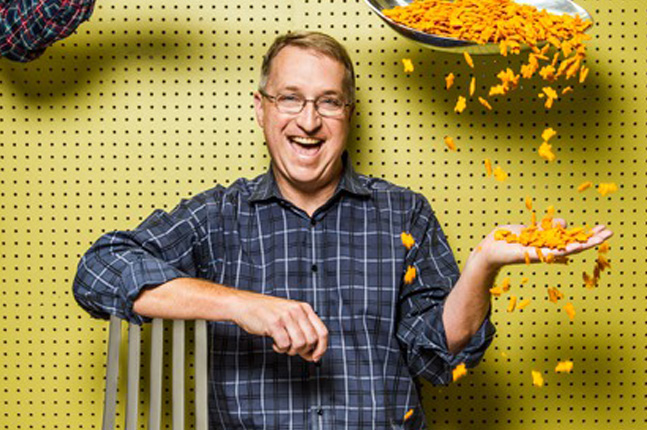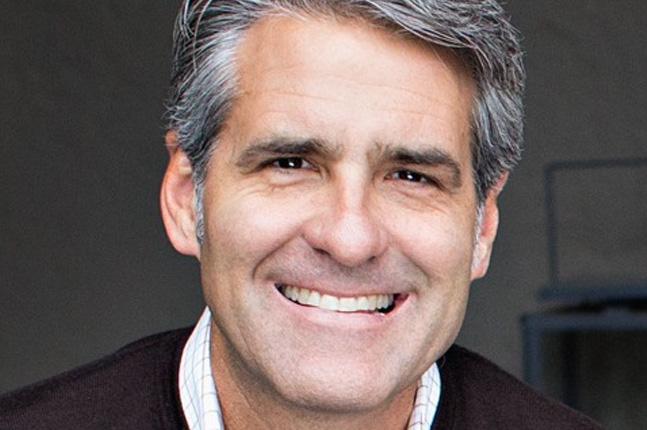When CEO John Foraker describes his 14-year stewardship of Annie’s, he sounds like he’s losing his mind. “I live in a state of paranoia,” he says of competitors that nibble like piranhas at his “healthy” food products. “I’m as obsessed with the big CPG companies as I am with the up-and-coming brands”–Kraft Foods on one side, smaller consumer packaged goods like Back to Nature Foods on the other. As they say in Catch-22 , “Just because you’re paranoid doesn’t mean they aren’t after you.”
A little maladjustment goes a long way in this business. Over the last five years sales have steadily grown at a 17% average annual clip. In the latest 12 months Annie’s earned $11 million on $175 million selling nearly 150 healthier alternatives to junk food. (While its meals, snacks and dressings claim zero artificial flavors, preservatives or GMO products, its signature mac-and-cheese mix loses to Kraft on calorie count and fats, saturated and otherwise.)
As more Americans grab organic foods, Annie’s continued success seems probable. So does Foraker’s recurring nightmare: that the better he executes and the faster he expands, the more competition he creates. “To stay ahead, we’ve got to constantly move forward and put as many points of differentiation between us and them as possible,” he says.
Annie’s wasn’t originally conceived as an us-versus-them proposition. Back in 1989 Annie Withey and then husband, Andrew Martin, had just sold Smartfood, a white cheddar popcorn, to Frito-Lay for $15 million or so. An experiment using Kraft macaroni and Smartfood’s powdered cheddar yielded a tasty dinner for the couple–and a new business, as Withey and Martin peddled their wares at festivals and food co-ops along the East Coast.
In 1995 Annie’s Homegrown completed a direct public offering, a little-used means of raising money from customers. Advertised with flyers in boxes of mac and cheese, the DPO raised $1.3 million. Three years later, with sales approaching $6 million, the company came to the attention of Foraker, a recent University of California, Berkeley M.B.A. grad who, with friends, had built Homegrown Natural Foods, a $10 million (sales) company offering flavored olive oils and mustards. Foraker was looking for a new brand.
Annie’s, meanwhile, was in a jam. As a public, but not publicly traded, company, it was having trouble raising capital, critical to jump-starting flat sales. In 1999 Foraker and Homegrown invested $2 million, with an agreement over time to buy out shares held by Withey and Martin and take Annie’s private. Within months Martin was out and Withey relegated to the title of “inspirational president.” The company began distributing to chains like Costco, Kroger and Safeway. So began the Paranoid Era.
By 2002, a lousy year for IPOs and equities, Foraker needed expansion capital. In stepped Molly Ashby, whose Solera Capital invested $23 million for a majority stake, folding in Foraker’s other foodstuffs and moving the company from Boston to Berkeley. Three years later Ashby and Foraker led a buyout of Annie’s Naturals, organic salad dressings and condiments made by a different eponymous cofounder, Annie Christopher of North Calais, Vt. (It’s been a so-so acquisition: Those categories still drive just 14% of total sales.)
Came the food wars. Pushing new products, Annie’s hired Bob Kaake, a former executive at PowerBar and Nestlé–just in time to deal with Kraft’s 2006 launch of its organic mac-and-cheese dinner, almost instantly becoming the industry leader. When the food giant quickly introduced single-serving Easy Mac Cups, Annie’s decided to one-up Kraft by developing a version with natural ingredients. Not so easy.
“We just couldn’t figure it out–we’d work on it and shelve it and take it back out when new products became available,” recalls Kaake. “It was a portion of the market that was experiencing serious growth, and we couldn’t play. It was incredibly frustrating.” After seven years of tinkering with formulations–as Kraft sped further ahead–Annie’s landed in? 15,000 stores this past July.
Sometimes getting out in front of a trend is just a matter of hustle. “In 2010 we knew that whole grain was getting more attention, and so we updated our cookie products to include 8 grams of whole grain per serving,” says Kaake. Snack sales have since more than doubled to $67 million.
While Foraker and Kaake boast about Annie’s R&D budget of $2.8 million (1.6% of sales) it’s laughable next to Kraft’s $178 million spend. They talk less about small but useful ideas provided by Annie’s little army of suppliers who make all their products. “Pasta guys are coming to them saying, ‘I’ve got a gluten-free, quinoa, flaxseed whatever,’ and Annie’s food scientists are sitting back going, ‘Okay, let’s tweak this,’ ” explains Mitchell Pinheiro, an analyst with Imperial Capital and a fan of the company. “ In a way, they’ve outsourced their R&D for free because their suppliers want their business.”
Brand extensions in this business aren’t exactly seismic breakthroughs. “They’re not doing a lot of actual product innovation,” says Laurie Demeritt, CEO of consumer research firm the Hartman Group. “They’re looking to their right and their left on the shelf and doing it better or cleaner.” Annie’s skillet dinners–a packet of organic pasta, spices and cheese to be cooked with ground meat–are “simply taking a page out of the Hamburger Helper playbook,” she says. But it’s paying off.
So, too, is the recent strategy to “age up,” to keep Annie’s products in households once kids outgrow nursery school foods. To supplement bunny-shaped graham crackers and cheddar snacks, the company has introduced more grown-up-looking square-shaped incarnations. Frozen pizzas and family-size frozen meals like lasagna and a butternut-squash-tinged macaroni and cheese are appearing in 1,700 Target stores this fall. The frozen-food aisle opens up a sliver of a $28.4 billion market.
New opportunities sometimes lead to minor mishaps. In January Annie’s issued a recall of frozen pizzas after its contract manufacturer of crusts discovered metal fragments from a third-party flour mill. The company started replacement shipments with a new supplier the following month, but distribution hasn’t yet reached pre-recall levels. According to company filings, the event whacked $1.4 million from its bottom line this year.
Annie’s has done most things right. In March 2012 Solera Capital took the company public again, raising $109 million. Investors cheered and have bid up the stock 159% since. Dealogic called it the single best IPO in over a year–the hottest since LinkedIn went public in May 2011. Solera did very well, indeed: On the day of the offering it recouped $77 million of its $80 million invested over ten years; subsequent offerings netted an additional $275 million; its remaining 15% stake is worth $126 million.
Solera’s Ashby credits Foraker. “He took this company through exceptional growth and transitioned himself from entrepreneur at a private company to public-company CEO.” Foraker appreciates the compliment. But, as you’d expect, success is only feeding his fears: “The big food companies are full of really smart people,” he says. “We’re watching our flanks.”





